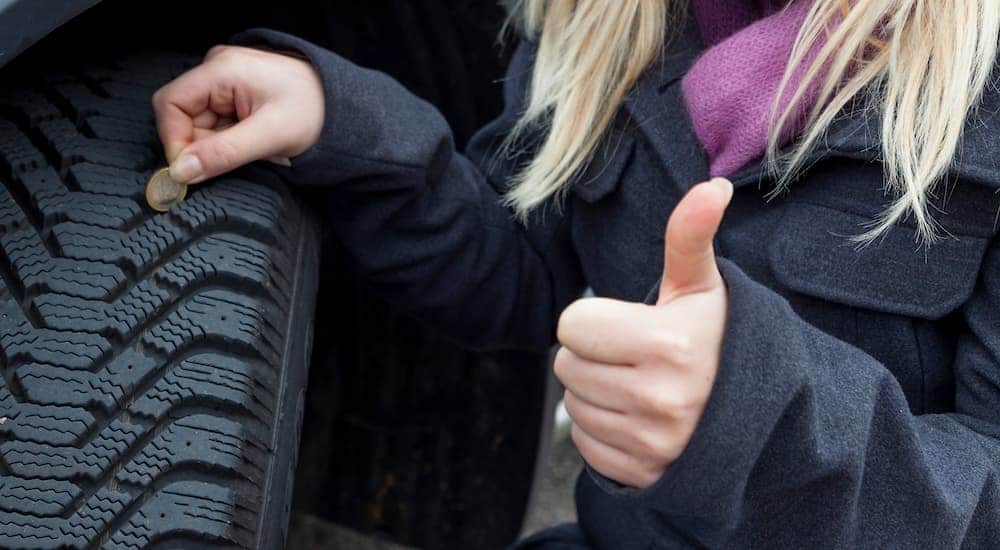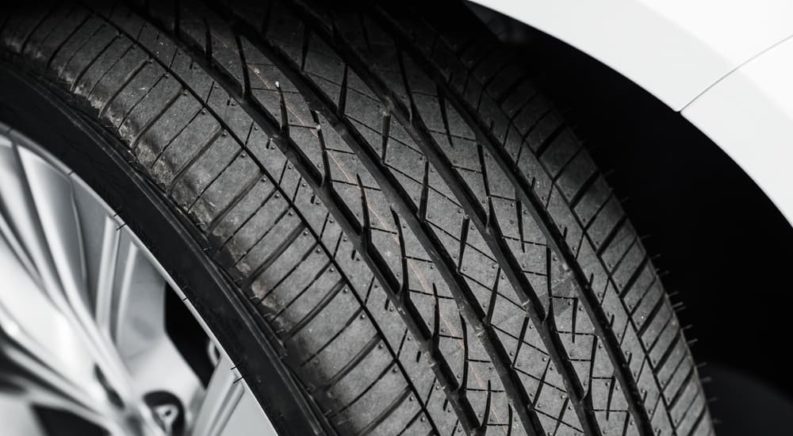The tires on your car are arguably the single most important part of your vehicle – while brakes and other parts are certainly vital, nothing can replace good tires. They are the only point of contact between your vehicle and road it travels on and so much of the quality of your ride depends on the tires. For that very reason, you need to take proper care of your tires and make sure they are in good condition to keep you safe and in control of your vehicle.
Failure to take proper care of your tires can have catastrophic results. At the very least, you can end up with a flat tire at an inopportune and inconvenient time. At the worst, you’ll have a blowout while cruising along the highway at high speeds, resulting in a deadly collision with other drivers. You don’t have to be a driver for very long to notice the ruins and scraps of tires littering the sides of roads and highways from people who have suffered severe tire damage or blowouts while driving.
You can help yourself avoid these types of situations by performing some regular and important maintenance on your tires. While nothing is guaranteed in life, proper tire care can improve your vehicle’s condition and the quality of your ride.
Way #1: Check Your Tire Pressure
Just like with the human body, one of the best kinds of care you can provide for tires on your vehicle is preventative maintenance that helps you avoid more expensive issues later on. A simple and quick way to do this is to check the pressure of your tires regularly – about once a month is a good idea. If you start to feel your vehicle running rougher than normal, such as it being shakier on roads that were pretty smooth before, then check your tire pressure.
Checking your tire pressure is easy. You can buy a pressure gauge quite cheap and use it at your home when it’s convenient. There are also often gauges located with tire air refill pumps if you don’t have your own gauge. Just take the cap off your tire’s air valve and place the gauge over it to see how much pressure the tire has. Your tires will indicate how much pressure they should have.
Way #2: Keep Your Tires Properly Inflated
Along with checking the pressure of your tires with a gauge, you can also visually keep an eye on your tires to make sure they are properly inflated. There’s no need to wait for monthly maintenance for this one. Every time you are going to get into your vehicle, quickly look at your tires and make sure they are properly inflated.
Underinflated tires will usually appear somewhat droopy on the road since they have extra material that needs to be inflated. Over-inflated ones, on the other hand, have too much air so they do not have as much surface contact as you want – they appear more rounded than they should. Properly inflated tires have an almost square shape to them when viewed head-on (or from behind) and make full contact with the road.
Way #3: Keep Them Clean
This one is pretty simple, but too often underappreciated for how effective it is. Always remember to keep your tires as clean as possible and to clean them off when you are washing the rest of your vehicle. Most automated car washes will do this for you, but if you wash your vehicle yourself, then keep it in mind.
You don’t need to use any sort of special chemical or treatment on your tires, just soap and water. Dirt, salt, and other things on the road can all wear away at the rubber of your tires. Keeping them clean will make your tires last longer and keep you safer.
Way #4: Check the Tread on Your Tires
This is also a very simple way to take care of your tires, which requires nothing more than a little pocket change. The tread on your tires helps you stay in control on wet roads by channeling the water away and letting you make as much contact with the road itself as possible. If the tread on your tires is too shallow, which happens naturally over time, then that benefit is reduced and it’s much easier to lose control in poor weather.
To check the tread on your tires, just use a quarter or penny. Insert the coin into the tread of your tires with the president’s head going down into the tire. If the image’s head goes into the tire, then your tread is deep enough. If you can see the top of the president’s head, then it’s time to replace your tires. If you use a quarter, this can give you advance warning that your tires are getting low, while a penny indicates a much more immediate issue.

Way #5: Rotate Your Tires
This is something you probably won’t do yourself unless you can easily get your vehicle entirely raised up to remove all four of your tires. When you take your vehicle in for some kind of maintenance that you cannot perform yourself, then you can ask them about rotating your tires for you. The way they should be rotated depends on your transmission and other aspects of your vehicle. This helps distribute wear and tear over time more evenly across all four of your tires and is a pretty simple and inexpensive way to care for them.
Way #6: Check for Wear and Tear
Any time you are doing any other kind of maintenance of your vehicle or your tires – like checking your tire pressure or tread depth – also take a moment to inspect the tires. Look for significant wear and tear such as physical damage to the tires from objects on the road. Any major damage or items stuck into the tire can cause a blowout when you least expect it.
If you do notice damage to your tires, then take your vehicle to a service center immediately – just remember to drive slowly and cautiously. If a foreign object is lodged in your tire, then they might be able to remove it without further issue. If the damage is too extensive, then they can replace your tires to make sure you stay safe on the road.
Way #7: Replace Your Tires Regularly
Here’s the reality of tire care: nothing you do can prolong the need to replace your tires indefinitely. Eventually, tires simply degrade through regular use and need to be replaced. In fact, even if you never drove your vehicle, the rubber in the tires will simply break down over time and make them unsuitable for use and safe driving.
If you notice any damage or significant wear from regular use, then you should replace your tires to keep them in good condition. On the other hand, if you do not see any warning signs about excess wear or damage, then you still need to replace your tires after a certain amount of time. Depending on the type of tires you have, how much you drive, the way you drive, and the road conditions you deal with the most, the time required can change.
A good rule to keep in mind is that you should generally replace your tires about every six years or about 50-60,000 miles. If you look at the information on the side of your tires, you’ll see different numbers – one of them is a four digit number that comes after “DOT.” This is the week and year in which the tire was manufactured. So if you see “DOT 1418,” then that means the tire was made in the 14th week of 2018. No matter what, if your tires are at least 10 years old, then you should immediately get them replaced, even if they look good.

